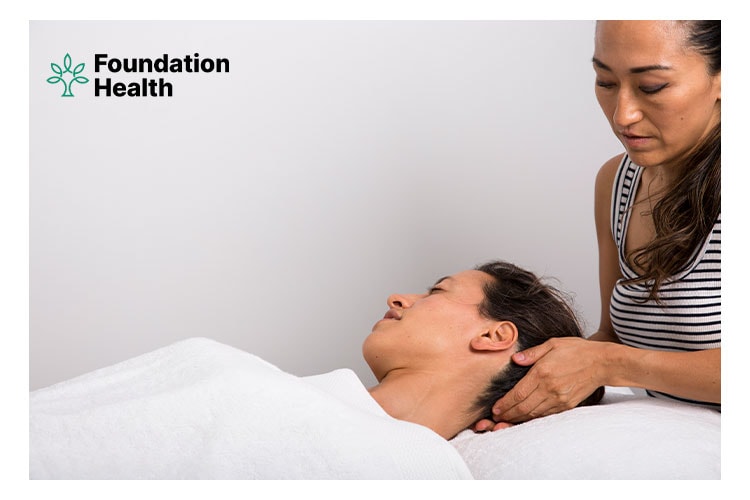The most common causes of muscular pain and aching muscles are overuse, increased tension, and trauma. All of which can occur due to overtraining.
Muscle strains, also known as pulled muscles, occur when the muscle is overstretched, causing fibres to tear. This can happen if you are tired, have poor flexibility, perform a movement that your body is not used to or perform repetitive movements/activities.
If pain relievers, anti-inflammatory medications, and rest haven’t provided you with long-term relief from muscular aches and pains, it’s time to see an osteopath.
What is overtraining?
Overtraining occurs when a person is unable to recover from strenuous activity. Performance declines and plateaus as a result of overtraining. This is the inability to perform consistently at a certain level or train at a load that exceeds a person’s capacity for recovery. People who overtrain stop progressing and can even lose strength and fitness. Athletes who overtrain also experience chronic fatigue, burnout, and overstress.
The majority of people will experience pain, weakness, and limited mobility. Swelling and bruising may occur depending on the severity of the injury. Surgery may be required if the injury is severe. Most muscle strains are mild to moderate in severity and heal within 2-4 weeks; however, more painful tears can take months to heal.
Common symptoms of overtraining
- An elevated resting heart rate, a persistently high heart rate following adequate rest, such as the morning after sleeping.
- A breakdown in mental health.
- Reduced variability in heart rate.
- Fatigue that persists even after adequate rest (different from fatigue due to a hard training session).
- A greater risk of infection.
- Burnout.
- An increase in injuries.
- Depression.
- An inability to relax.
- There is a plateau or decline in performance.
- Getting irritable.
- Muscle soreness that persists.

3 Steps to prevent muscle strains
1. Warm-up
Effective training and injury prevention require active warm-ups and movement preparation. Avoiding a warm-up leaves you vulnerable to injury. Activate the area you are working on for at least 10 minutes to stimulate the blood flow. This will get your body moving!
2. Stretch
It’s advisable to begin stretching with what’s known as “dynamic stretching.” This involves stretches that incorporate movement. Dynamic stretching prepares your body for what’s to come by gently increasing your range of motion and raising your heart rate while also getting your blood flowing.
Post-exercise is the best time to perform “static stretching” in areas that may feel tight—these are commonly known stretches that you hold in one position for 15-30 seconds. Since your muscles are already warm after your workout, stretching will benefit them more than if you did it when they are cold.
3. Sleep
Sleep is most likely the most underutilised recovery tool. You are not recovering if you are not sleeping. Relaxation time is significant for optimal recovery, so make it a priority to rest when you can.
How to avoid overtraining
Training will vary depending on the exercises you choose and how you build it up. Those who have been sedentary for a long time will need to start much slower than those who wish to advance their previous training programs.
Excessive training should be avoided. You must manage the time between sessions so your body can get adequate rest. Whether you are trying to gain muscle or lose weight, overtraining will put your body under stress, leading to a breakdown of your body’s repair system.
As a general rule, you should increase your load by 10% a week and allow for adequate rest time between hard training sessions. Most experts agree that this should be at least 24 hours, if not up to 48 hours, and never underestimate the value of a rest day!
Can an osteopath help with muscle pain?
An osteopath can help with muscle pain. Osteopathy can help by manipulating a patient’s muscles, tendons, and ligaments. This causes tight muscles to relax, circulation to improve, and trapped ligaments and tendons to be released. During soft tissue release, by assisting in the alignment of your joints and smoothing out areas of scar tissue and other muscular irregularities, the muscular pain cycle is broken, the healing process is accelerated, and muscular balance is restored.

Final thoughts on Osteopath for Overtraining
Overtraining can be assessed, diagnosed, and managed using osteopathy. Gym-related injuries and overtraining account for the vast majority of the patients we see as osteopaths daily.
Overtraining can impair performance and lead to long-term psychological and physical issues.
If you experience sharp, intense pain while working out in the gym, this is your body’s way of alerting you that something is wrong. It either means you’ve already been injured or that one is on the way.

